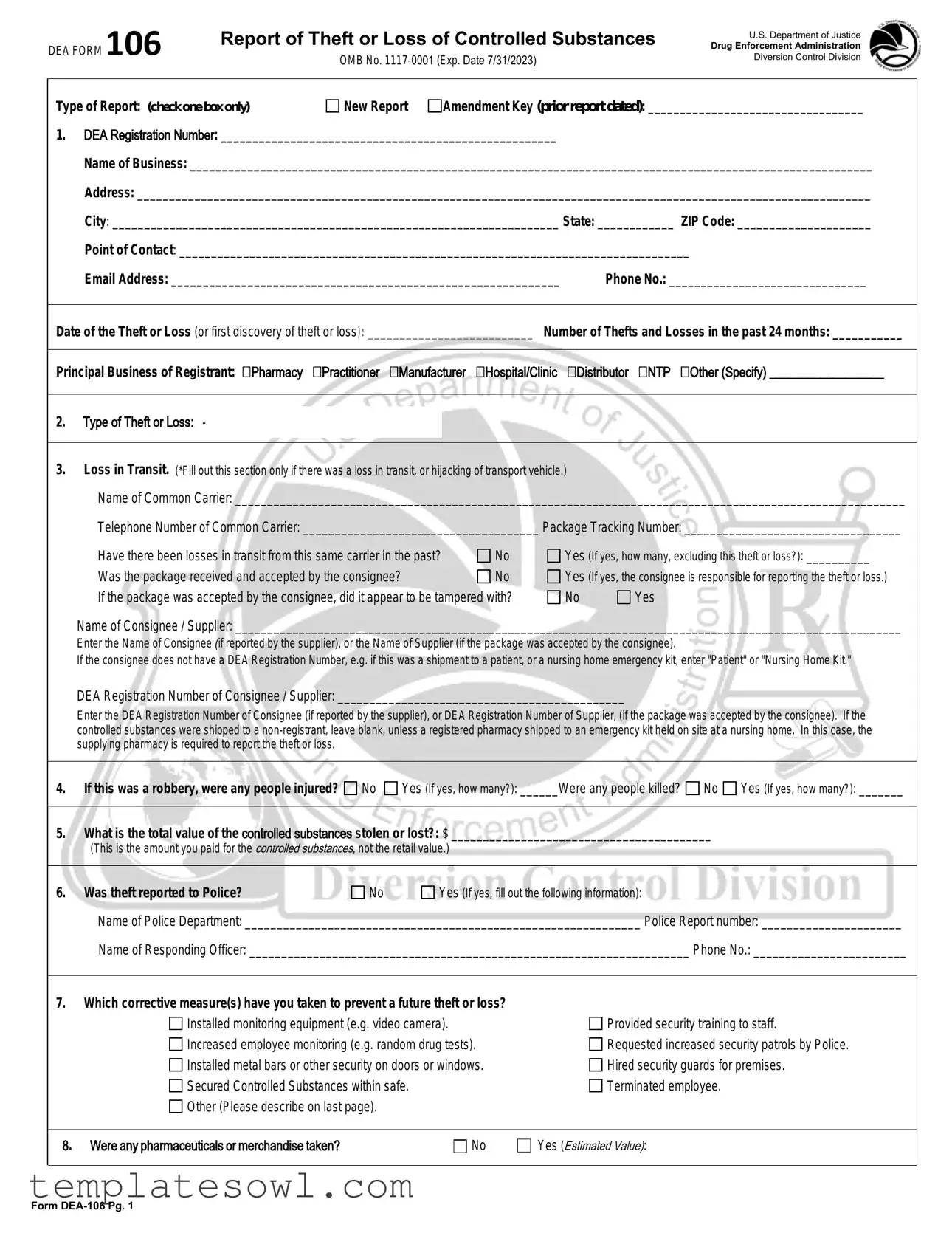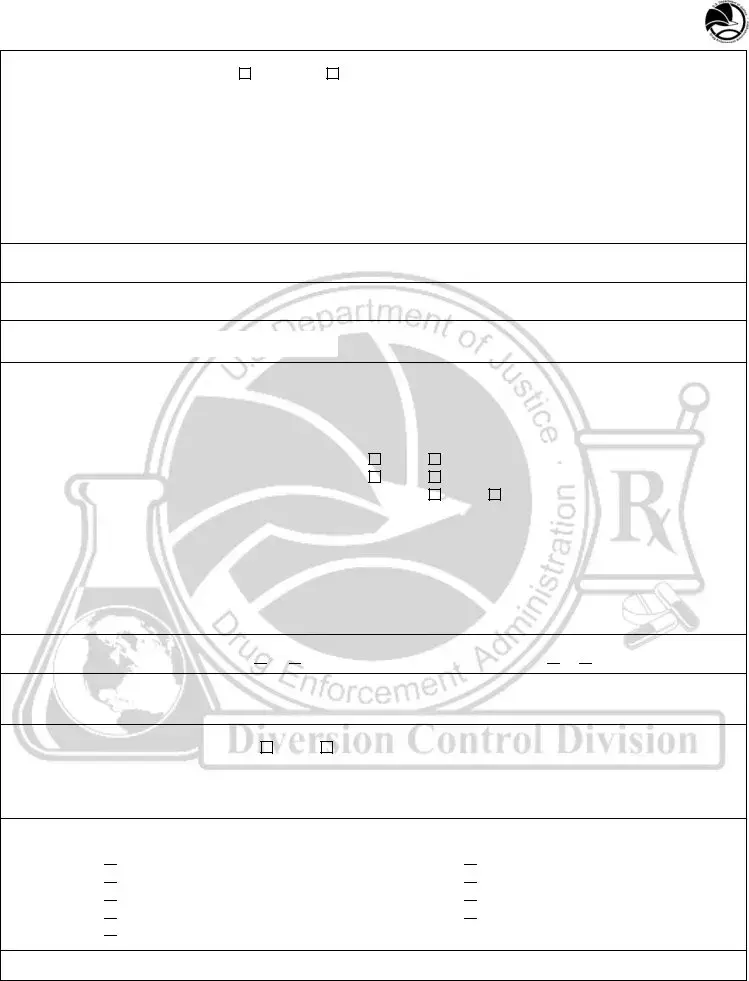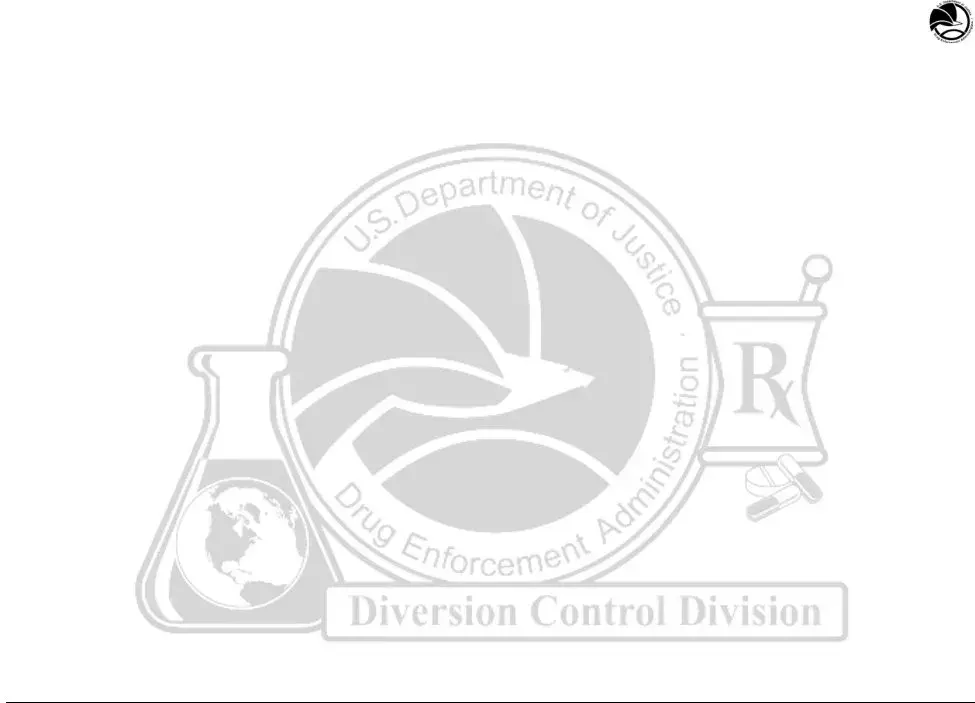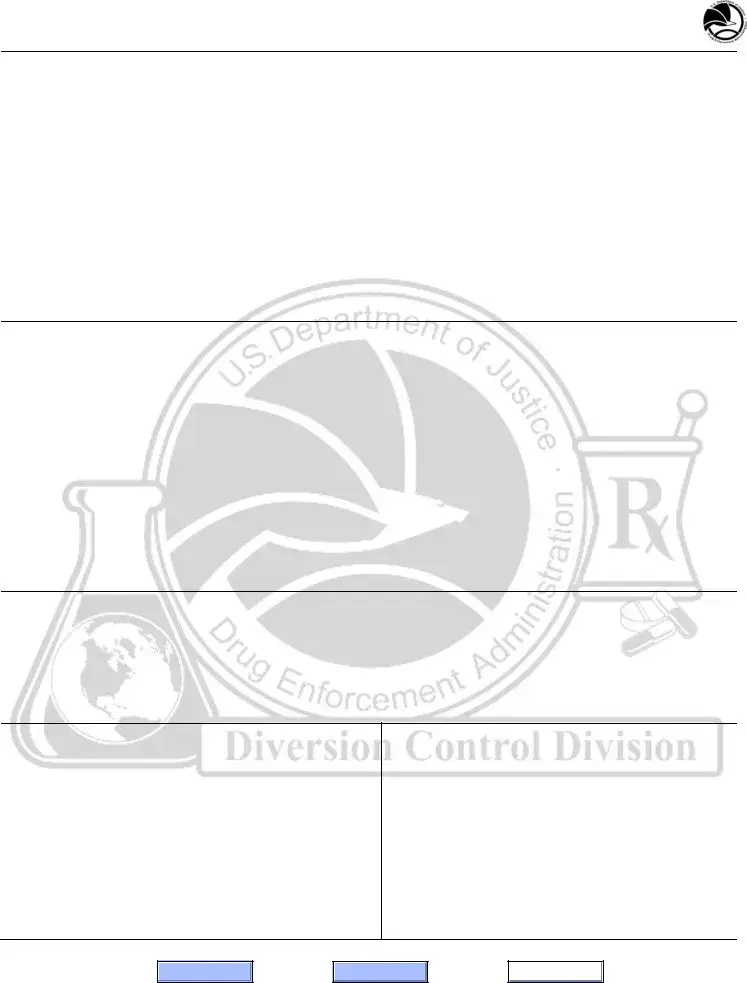Type of Report: (check one box only) |
New Report |
Amendment Key (prior report dated): __________________________________ |
1.DEA Registration Number: _____________________________________________________
Name of Business: ___________________________________________________________________________________________________________
Address: ___________________________________________________________________________________________________________________
City: ______________________________________________________________________ State: ____________ ZIP Code: _____________________
Point of Contact: ________________________________________________________________________________
Email Address: _____________________________________________________________ Phone No.: _______________________________
Date of the Theft or Loss (or first discovery of theft or loss): __________________________ Number of Thefts and Losses in the past 24 months: ___________
Principal Business of Registrant: Pharmacy Practitioner Manufacturer Hospital/Clinic Distributor NTP Other (Specify) __________________
2.Type of Theft or Loss: -
3.Loss in Transit. (*Fill out this section only if there was a loss in transit, or hijacking of transport vehicle.)
Name of Common Carrier: _________________________________________________________________________________________________________
Telephone Number of Common Carrier: _____________________________________ Package Tracking Number: __________________________________
Have there been losses in transit from this same carrier in the past? |
No |
Yes (If yes, how many, excluding this theft or loss?): __________ |
Was the package received and accepted by the consignee? |
No |
Yes (If yes, the consignee is responsible for reporting the theft or loss.) |
If the package was accepted by the consignee, did it appear to be tampered with? |
No |
Yes |
Name of Consignee / Supplier: _________________________________________________________________________________________________________
Enter the Name of Consignee (if reported by the supplier), or the Name of Supplier (if the package was accepted by the consignee).
If the consignee does not have a DEA Registration Number, e.g. if this was a shipment to a patient, or a nursing home emergency kit, enter "Patient" or "Nursing Home Kit."
DEA Registration Number of Consignee / Supplier: _____________________________________________
Enter the DEA Registration Number of Consignee (if reported by the supplier), or DEA Registration Number of Supplier, (if the package was accepted by the consignee). If the controlled substances were shipped to a non-registrant, leave blank, unless a registered pharmacy shipped to an emergency kit held on site at a nursing home. In this case, the supplying pharmacy is required to report the theft or loss.
4.If this was a robbery, were any people injured?  No
No  Yes (If yes, how many?): ______Were any people killed?
Yes (If yes, how many?): ______Were any people killed?  No
No  Yes (If yes, how many?): _______
Yes (If yes, how many?): _______
5.What is the total value of the controlled substances stolen or lost?: $ _________________________________________
(This is the amount you paid for the controlled substances, not the retail value.)
6. Was theft reported to Police? |
No |
Yes (If yes, fill out the following information): |
Name of Police Department: ______________________________________________________________ Police Report number: ______________________
Name of Responding Officer: _____________________________________________________________________ Phone No.: ________________________


 No
No  Yes
Yes  No
No  Yes
Yes  Installed monitoring equipment (e.g. video camera).
Installed monitoring equipment (e.g. video camera). Increased employee monitoring (e.g. random drug tests).
Increased employee monitoring (e.g. random drug tests). Installed metal bars or other security on doors or windows.
Installed metal bars or other security on doors or windows. Secured Controlled Substances within safe.
Secured Controlled Substances within safe. Other (Please describe on last page).
Other (Please describe on last page).
 Provided security training to staff.
Provided security training to staff.
 Requested increased security patrols by Police.
Requested increased security patrols by Police. Hired security guards for premises.
Hired security guards for premises. 
 Terminated employee.
Terminated employee.

